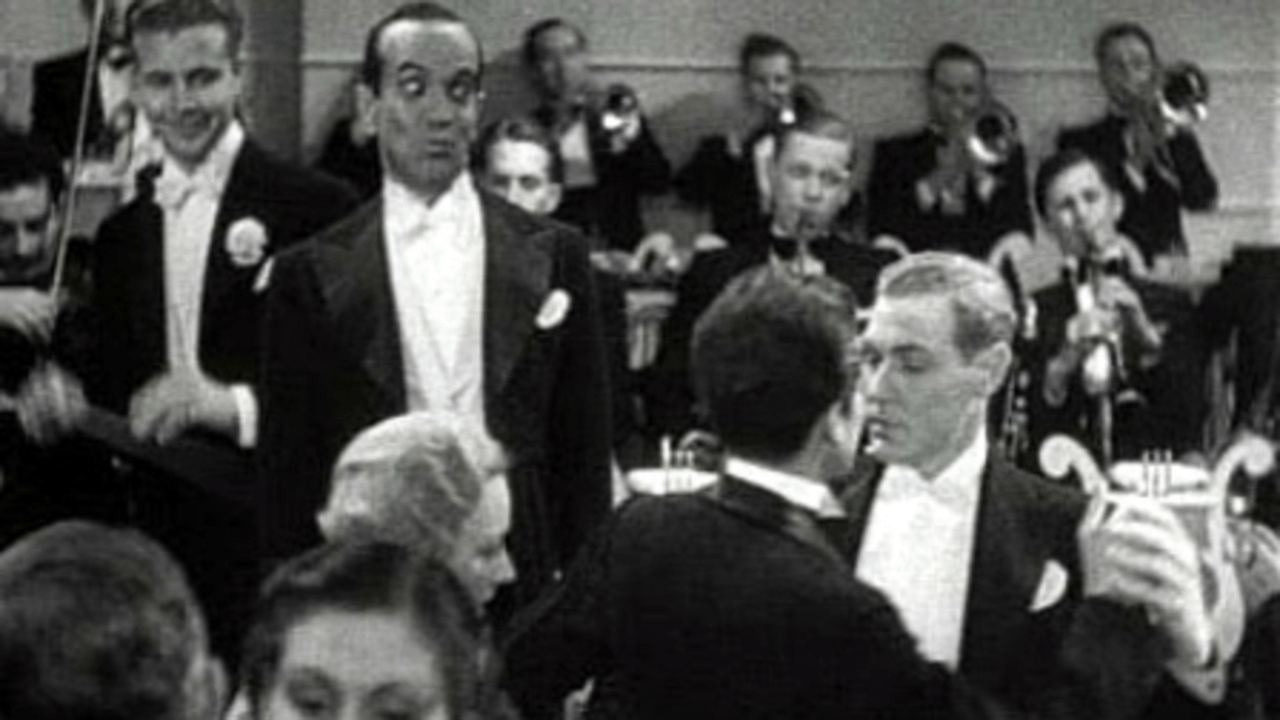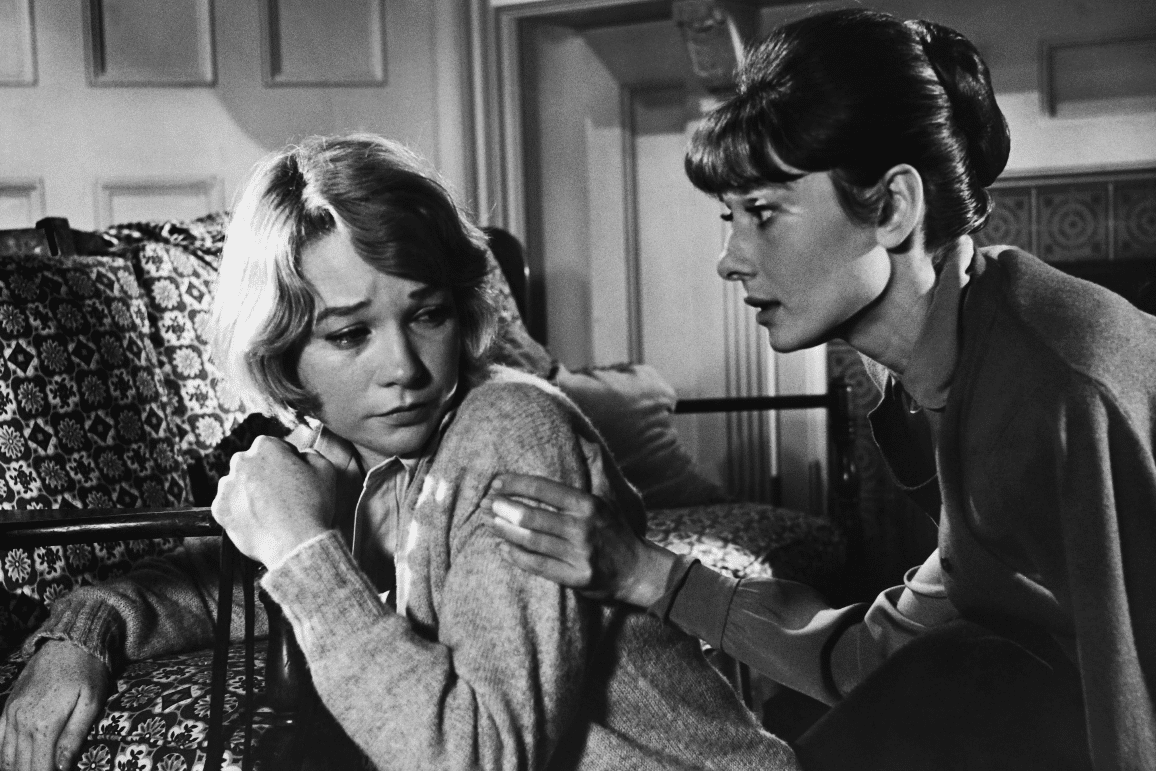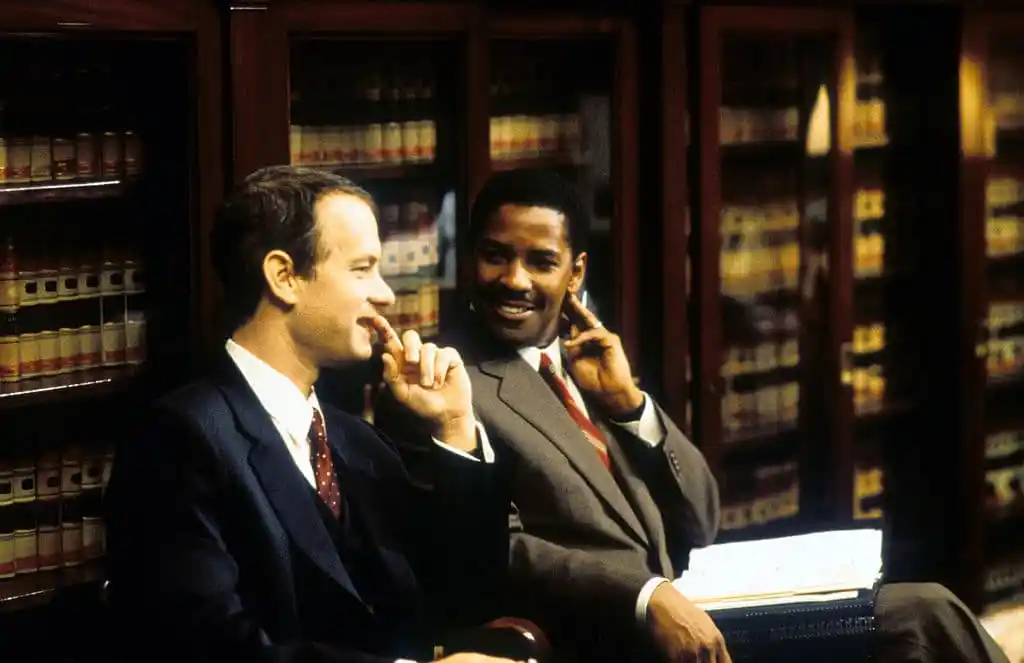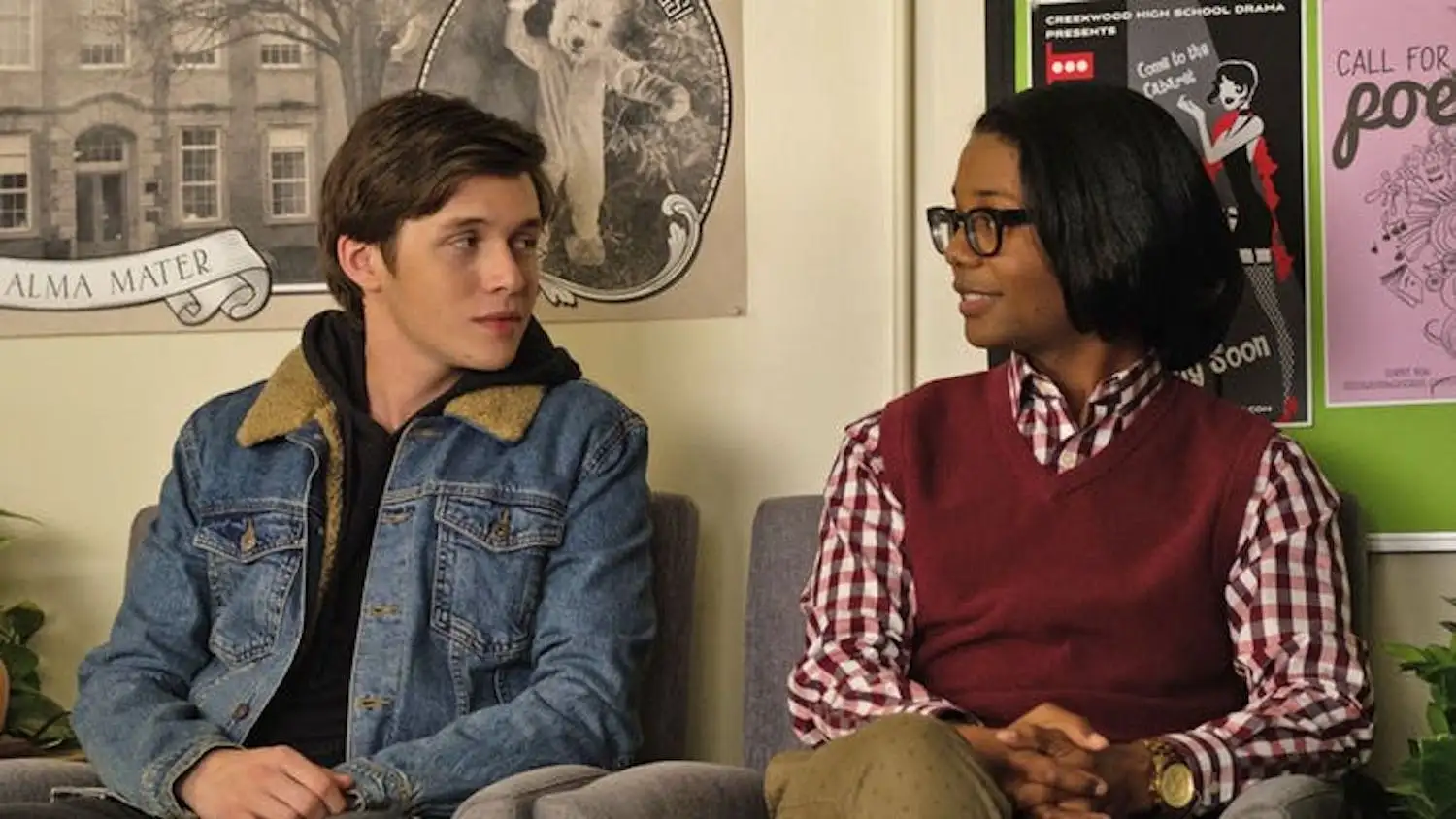Philadelphia, The Chidren’s Hour and Brokeback Mountain have made waves in Hollywood. (PinkNews)
In the 1930s, it’s safe to say that there wasn’t a whole lot of queer representation on screen – which is why Wonder Bar had the impact it did.
The film, an adaptation of a Broadway musical of the same name, features a small yet seismic moment in which a man “cuts in” on a couple dancing – but instead of going off dancing with the woman, he whisks the man off his feet.
That wasn’t the first example of gay representation on screen, but it was an early example of Hollywood daring to depict queerness.
Films like Wonder Bar were “pretty rare”, says Harry Benshoff, a film professor at the University of North Texas. Since the medium of film was first invented, LGBT+ identities have either been absent or cloaked in subtext. That continues to this day in big-budget, major studio fare.
Benshoff says European cinema was much better at depicting queerness on screen in the early film era. He draws attention to the 1919 German film Different from the Others, which is considered to be the first pro-gay film in the world, as an example of the differing approaches taken.

“The Europeans were a lot more open to those ideas in the teens and 20s than the United States was,” Benshoff says.
In 1923, an “infamous” film production of Oscar Wilde’s Salomé caused controversy in the United States because of its “over the top, genderqueer sensibility”. Following on from that, there were “sporadic instances” of queer representation on screen – but they were rarely overt.
“It was done through gender coding, so there would be swishy, effeminate men and butch women in Hollywood films, and that was instituted officially because we had this thing called the Hollywood Production Code,” Benshoff explains.
The Hays Code
The Hollywood Production Code, also known as the Hays Code, came to define LGBT+ representation on screen in Hollywood for decades – it made sure that queerness was only ever presented in deeply coded ways.
“The code was written in 1930 but not really put into effect until 1934, and those years from 30 to 34 are very interesting years in Hollywood history because a lot of the classical genres – horror, gangster, musical – really codify in those years,” Benshoff says. “Those years are called the ‘pre-code’ years, which is paradoxical because the code was written, but it wasn’t enforced yet.”
America was going through the Great Depression, and Hollywood was putting as much sex and violence into its films as it possibly could to keep cash-strapped audiences going to the cinema. Naturally, that led to calls for censorship, Benshoff says.
“They came up with this system called ‘the seal of approval’, so a film that abided by the code got the seal of approval, and that would play in the major theatres, which were also owned by Hollywood. So it was another way of consolidating their monopoly or oligopoly.”

After the Hays Code came into effect, depictions of queerness that were as overt as Wonder Bar became increasingly rare. The code lasted well into the 1960s, at which point it was replaced by the ratings system. That finally opened the door for more “discussion of homosexuality” in film.
The code was amended slightly “to allow for the sensitive representation of homosexuality”, Benshoff says. He paraphrases GLAAD co-founder Vito Russo, adding that this essentially meant you could have gay characters, but “they had to die in the end”.
“So there’s a series of films like Advise & Consent where the gay guy kills himself, there’s The Children’s Hour, which is about rumours of lesbianism in a girls’ school where one of the ladies hangs herself. These aren’t really feel good affairs.”
The troubling depiction of homosexuality and gender diversity on screen didn’t change all that much throughout the 1960s, Benshoff says. There were some “swishy, joke characters” and “scary transvestite characters” at that time – the trope of the “queer psycho killer” came into being at that time too.
There was a slight shift in the 1970s with films like Cabaret coming on stream, but change was still slow.
“The two films I talk about as being pretty groundbreaking in that era, around Stonewall, are The Boys in the Band and The Killing of Sister George. Both were based on stage plays, which I think is significant. The stage was always a bit more open to dealing with those themes. But both of those films are kind of scary in their own way as well.”
AIDS disrupted positive changes in queer representation on screen
Change was happening, albeit slowly, when the AIDS epidemic hit in the 1980s. Just as queer people were starting to gain a small amount of respect, they were demonised once more.
“The 80s starts out before AIDS becomes a public awareness issue with a couple of films that are pushing towards representing ‘better’ images of homosexuals,” Benshoff says. “Victor/Victoria comes to mind, although the gay situation’s a sub-plot. Making Love comes to mind, as does John Sayles’ film Lianna. We see the first trans character in that era in The World According to Garp. But then when AIDS hits, Hollywood freaks out, sticks its head in the ground, and really avoids the topic in any kind of direct way.”
Television was better at dealing with HIV and AIDS than mainstream Hollywood fare, Benshoff says. One of the first projects to touch on the virus in a meaningful way was the television film An Early Frost, which first aired in 1985.

“Philadelphia, which was eight years later with Tom Hanks, is basically the same movie. You have the nice white gay man who gets HIV, goes home and his family has to deal with it. I don’t like to put films like Philadelphia down, although people like Larry Kramer would… but it wasn’t made for gay activists, it was made for middle America. So am I glad it got made? Yes. Could it have been a better film? Yes.”
Hollywood was intent upon ignoring HIV and queerness, but that’s not to say filmmakers all across the board were avoiding those topics. In the early 90s, independent filmmakers started making films that eventually became known as New Queer Cinema.
At the same time, more mainstream Hollywood films like The Birdcage start slipping through the net. By the end of the 90s, shows like Will & Grace and Ellen were making waves on television.
Queer stories are told today – but ‘Oscars bait’ is a problem
That paved the way for Brokeback Mountain in 2005, the cowboy film that captured the hearts of queer people everywhere. That film was “a phenomenon”, Benshoff says.
“I think it touched the buttons that it touched because it was adapting the western, and in America, the western is the pre-eminent American masculine genre, and to say that these guys might have been queer – that just blew people’s brains,” Benshoff says. “I was also fascinated by the way it automatically got labelled as ‘the gay cowboy movie’, which, of course, it’s not, because they’re not gay. They’re at least bisexual because they’re both married and have kids. What is the need to call it the gay cowboy movie? One of the most provocative things about the film, I think, is that it says ‘No, sexuality is fluid.’”

It’s been almost 17 years since Brokeback Mountain was released – and change has remained slow in Hollywood.
“Hollywood doesn’t really want to make movies anymore, it wants to make franchises,” Benshoff says. “That’s why we have so much Marvel, but they also want to make movies that win Oscars. That’s how they pat themselves on the back and point to their cultural significance.”
That’s given rise to what Benshoff calls the “Oscar bait” queer films. He loathed The Danish Girl for that reason, although he had more time for The Imitation Game.
“They can kind of soft pedal the gay stuff by saying, ‘Oh, it’s Oscar worthy!’ That seems to be the trend in mainstream Hollywood. Of course, what’s changed the game tremendously is streaming and Netflix. There are thousands and thousands of people making LGBT+ films out there now, and they can find the light of day on these streaming platforms. The problem is sometimes they fly below the radar.”
Television is still doing a better job at depicting LGBT+ lives
As is the case with all queer representation, things are better on television than in film. Benshoff lists Pose and Orange is the New Black as examples of television shows that have gone further than Hollywood films in depicting and exploring trans lives, for example.
“But again, all of these things are not Hollywood,” he says. “I guess if I were going to say where to look for the better representations, I would say, not in Hollywood – maybe on the television or on your computer screen.”
There was some consternation among queer people when Love, Simon was released in 2018. On the one hand, it’s a big budget film with an openly gay character. On the other hand, it’s not exactly pushing boundaries. Benshoff describes it as “homonormative”.
“It’s all white and upper class and, ‘Oh, there’s no problems really here.’ It’s a rare Hollywood film about gay issues that played in the multiplexes that was not one of these prestige films – it was just a little film. And I was the only gay man in the audience. It was all teenage girls. I’m not sure what that means.”

He was much more impressed with the TV spin-off Love, Victor, which explores class and ethnicity in ways Love, Simon never did. The difference, Benshoff says, is all to do with money.
“The problem partly is they make those films for the broadest possible global audience, and a lot of that is China. And China still has some pretty restrictive laws about LGBT+ people, as do many places around the globe. So Hollywood’s not going to risk a huge, big budget movie on gay storylines if it’s not going to play globally now. With television and streaming, they can take risks because it’s a lower budget, or it’s got a pre-selected audience.”
Trans representation lags far behind
Sean Griffin is a film professor who works at Meadows School of the Arts. He says there’s been a “trade-off” as LGBT+ representation has increased on screen – while queer characters are more rounded today, there’s also less room for fluidity.
“It’s like, ‘You sit here on the sexual orientation branch. Everything is cut, dried and organised,’” Griffin says. “I think where we are currently is that representations of gay or lesbian characters are becoming more regular. They’re not rampant, but they’re becoming more regular. Scenes of people kissing each other on American television or movies are not as uncommon as they used to be.”
Sadly, trans representation on screen continues to lag far behind – and it’s often harmful and degrading to trans communities. Sam Feder’s Netflix documentary Disclosure expertly deconstructs the ways in which Hollywood has brought trans characters into the mix to mock and denigrate them.
“For transgender characters, they are at the point where gay and lesbian characsters were about 30 years ago where they’re starting to get noticed,” Griffin says. “So it’s like, this is an issue that people are talking about – let’s have a cisgender person playing a transgender character so they can be like, ‘Oh my god, what an acting challenge,’ instead of just hiring a transgender person to play the part.”
Like Benshoff, Griffin says it all comes down to money. At the end of the day, the Hollywood machine wants to make a profit.
“Movies cost more, and so they’re a bigger gamble, a bigger risk. The people that are producing them, especially Hollywood movies, want to attract the widest audience possible, so they go for the lowest common denominator to generate the least controversy.
“Maybe they’re not the leads yet but they are showing up in the Marvel Cinematic Universe and they’re showing up in Disney fairytales. They’re there, but they’re sort of tiptoeing in. That’s sort of like the last frontier – here they are in independent films, here they are in the art films that are going to get Oscar nominations, and now they’re in one or two big movies, but they’re in small parts when they show up. Getting to the point where they are the lead characters will be the last major thing.”
At the end of the day, Griffin says queer people shouldn’t be looking to Hollywood if they want to see meaningful LGBT+ film.
“The images that they will be showing of homosexuality or queer stuff will always be normative – the white picket fence, married, monogamous, kids, buttoned up and nice instead of dropping ecstasy and going to the rave with all our piercings,” Griffin laughs. “That is, unless we’re the villains, which becomes its own problem.
“I don’t think that’ll ever be completely gone, but if you want something that’s more edgy, what are you doing watching a Hollywood film to begin with? It’s like going to a church and saying, ‘Why is there no rave music in here?’”
